Mercedes G Class vs VW T-Cross – Which model is better for everyday use?
Everyday use, family trips or long-distance drives – here’s where the differences show.
Discover whether Mercedes G Class or VW T-Cross fits your lifestyle better.
Costs and Efficiency:
Price and efficiency are often the first things buyers look at. Here it becomes clear which model has the long-term edge – whether at the pump, the plug, or in purchase price.
VW T-Cross has a clearly advantage in terms of price – it starts at 21100 £, while the Mercedes G Class costs 106600 £. That’s a price difference of around 85513 £.
Fuel consumption also shows a difference: VW T-Cross manages with 5.40 L and is therefore significantly more efficient than the Mercedes G Class with 8.70 L. The difference is about 3.30 L per 100 km.
Engine and Performance:
Under the bonnet, it becomes clear which model is tuned for sportiness and which one takes the lead when you hit the accelerator.
When it comes to engine power, the Mercedes G Class has a significantly edge – offering 605 HP compared to 150 HP. That’s roughly 455 HP more horsepower.
In acceleration from 0 to 100 km/h, the Mercedes G Class is decisively quicker – completing the sprint in 4.40 s, while the VW T-Cross takes 8.40 s. That’s about 4 s faster.
In terms of top speed, the Mercedes G Class performs barely noticeable better – reaching 220 km/h, while the VW T-Cross tops out at 200 km/h. The difference is around 20 km/h.
There’s also a difference in torque: Mercedes G Class pulls decisively stronger with 1164 Nm compared to 250 Nm. That’s about 914 Nm difference.
Space and Everyday Use:
Cabin size, boot volume and payload all play a role in everyday practicality. Here, comfort and flexibility make the difference.
Both vehicles offer seating for 5 people.
In curb weight, VW T-Cross is convincingly lighter – 1267 kg compared to 2485 kg. The difference is around 1218 kg.
In terms of boot space, the Mercedes G Class offers noticeable more room – 640 L compared to 455 L. That’s a difference of about 185 L.
In maximum load capacity, the Mercedes G Class performs noticeable better – up to 2010 L, which is about 729 L more than the VW T-Cross.
When it comes to payload, Mercedes G Class distinct takes the win – 715 kg compared to 480 kg. That’s a difference of about 235 kg.
Who wins the race?
The Mercedes G Class proves to be has the upper hand and therefore becomes our DriveDuel Champion!
Mercedes G Class is the better all-rounder in this comparison.
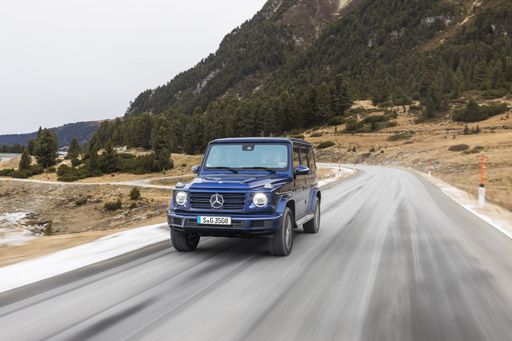
Mercedes G Class
Mercedes G Class
The Mercedes-Benz G-Class stands as a symbol of rugged luxury, combining robust off-road capabilities with sophisticated design. Its iconic boxy shape and imposing presence are complemented by a lavish interior that offers a blend of comfort and cutting-edge technology. Despite its longstanding heritage, the G-Class continues to evolve, maintaining its status as a premier choice for those seeking both adventure and opulence.
details @ group-media.mercedes-benz.com
@ group-media.mercedes-benz.com
 @ group-media.mercedes-benz.com
@ group-media.mercedes-benz.com
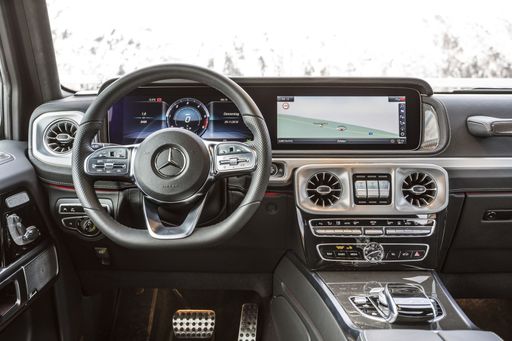 @ group-media.mercedes-benz.com
@ group-media.mercedes-benz.com
VW T-Cross
The VW T-Cross stands out as a versatile compact SUV that combines practicality with style. Its interior design offers a spacious and flexible layout, ideal for both city driving and weekend adventures. With its modern infotainment system, the T-Cross ensures drivers and passengers stay connected throughout their journeys.
details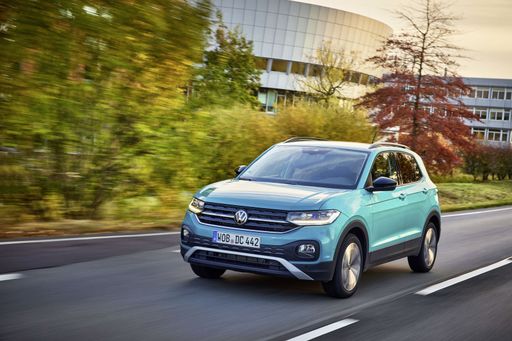 @ Volkswagen
@ Volkswagen
 @ Volkswagen
@ Volkswagen
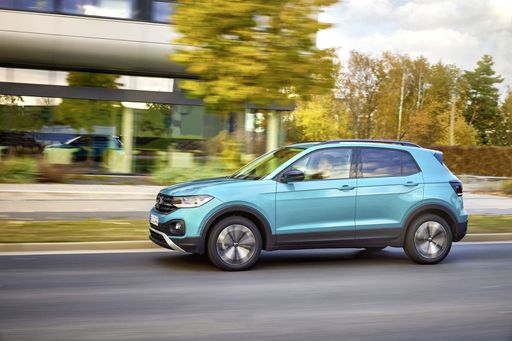 @ Volkswagen
@ Volkswagen
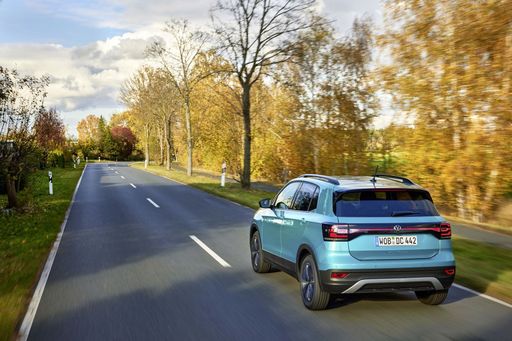 @ Volkswagen
@ Volkswagen
 @ Volkswagen
@ Volkswagen
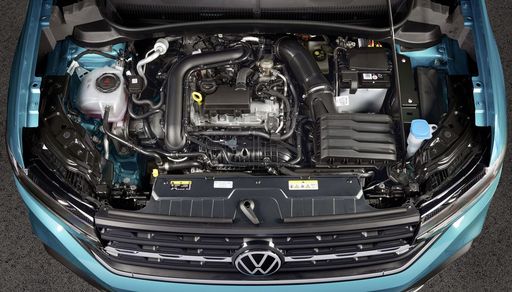 @ Volkswagen
@ Volkswagen

|

|
|
|
|
Costs and Consumption |
|
|---|---|
|
Price
106600 - 171000 £
|
Price
21100 - 31500 £
|
|
Consumption L/100km
8.7 - 14.7 L
|
Consumption L/100km
5.4 - 6 L
|
|
Consumption kWh/100km
28 kWh
|
Consumption kWh/100km
-
|
|
Electric Range
468 km
|
Electric Range
-
|
|
Battery Capacity
116 kWh
|
Battery Capacity
-
|
|
co2
0 - 336 g/km
|
co2
124 - 136 g/km
|
|
Fuel tank capacity
100 L
|
Fuel tank capacity
40 L
|
Dimensions and Body |
|
|---|---|
|
Body Type
Off-Roader
|
Body Type
SUV
|
|
Seats
5
|
Seats
5
|
|
Doors
5
|
Doors
5
|
|
Curb weight
2485 - 3085 kg
|
Curb weight
1267 - 1338 kg
|
|
Trunk capacity
620 - 640 L
|
Trunk capacity
455 L
|
|
Length
4624 - 4873 mm
|
Length
4127 mm
|
|
Width
1931 - 1984 mm
|
Width
1784 mm
|
|
Height
1973 - 1983 mm
|
Height
1573 mm
|
|
Max trunk capacity
1990 - 2010 L
|
Max trunk capacity
1281 L
|
|
Payload
415 - 715 kg
|
Payload
463 - 480 kg
|
Engine and Performance |
|
|---|---|
|
Engine Type
Electric, Petrol MHEV, Diesel MHEV
|
Engine Type
Petrol
|
|
Transmission
Automatic
|
Transmission
Manuel, Automatic
|
|
Transmission Detail
Reduction Gearbox, Automatic Gearbox
|
Transmission Detail
Manual Gearbox, Dual-Clutch Automatic
|
|
Drive Type
All-Wheel Drive
|
Drive Type
Front-Wheel Drive
|
|
Power HP
387 - 605 HP
|
Power HP
95 - 150 HP
|
|
Acceleration 0-100km/h
4.4 - 5.8 s
|
Acceleration 0-100km/h
8.4 - 11.3 s
|
|
Max Speed
180 - 220 km/h
|
Max Speed
180 - 200 km/h
|
|
Torque
760 - 1164 Nm
|
Torque
175 - 250 Nm
|
|
Number of Cylinders
6 - 8
|
Number of Cylinders
3 - 4
|
|
Power kW
285 - 445 kW
|
Power kW
70 - 110 kW
|
|
Engine capacity
2989 - 3982 cm3
|
Engine capacity
999 - 1498 cm3
|
General |
|
|---|---|
|
Model Year
2024 - 2025
|
Model Year
2024 - 2025
|
|
CO2 Efficiency Class
A, G
|
CO2 Efficiency Class
D, E
|
|
Brand
Mercedes-Benz
|
Brand
VW
|
What drive types are available for the Mercedes G Class?
Available configurations include All-Wheel Drive.
The prices and data displayed are estimates based on German list prices and may vary by country. This information is not legally binding.
